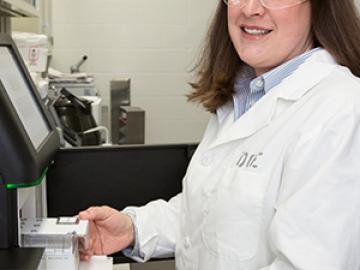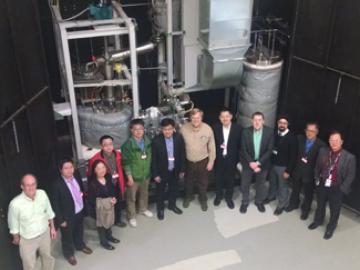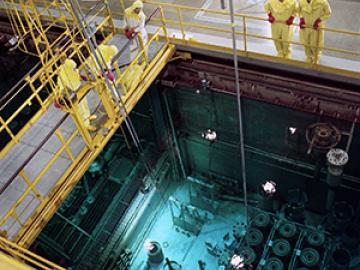
Filter News
Area of Research
- (-) Biological Systems (7)
- (-) Energy Frontier Research Centers (7)
- (-) Nuclear Science and Technology (10)
- Advanced Manufacturing (5)
- Biology and Soft Matter (1)
- Building Technologies (3)
- Chemistry and Physics at Interfaces (5)
- Clean Energy (56)
- Computational Biology (1)
- Fossil Energy (1)
- Functional Materials for Energy (7)
- Geographic Information Science and Technology (2)
- Isotope Development and Production (1)
- Materials (62)
- Materials for Computing (1)
- Materials Synthesis from Atoms to Systems (6)
- Materials Under Extremes (5)
- Neutron Science (11)
- Nuclear Systems Technology (1)
- Quantum Condensed Matter (1)
- Reactor Technology (1)
- Renewable Energy (1)
- Supercomputing (16)
- Transportation Systems (3)
News Type
Media Contacts


Less than 1 percent of Earth’s water is drinkable. Removing salt and other minerals from our biggest available source of water—seawater—may help satisfy a growing global population thirsty for fresh water for drinking, farming, transportation, heating, cooling and industry. But desalination is an energy-intensive process, which concerns those wanting to expand its application.

Representatives from the Oak Ridge National Laboratory (ORNL) and the Shanghai Institute of Applied Physics (SINAP) are meeting at ORNL this week as part of an agreement between the two institutions to work together on the advancement

Graphene, a strong, lightweight carbon honeycombed structure that’s only one atom thick, holds great promise for energy research and development. Recently scientists with the Fluid Interface Reactions, Structures, and Transport (FIRST) Energy Frontier Research Center (EFRC), led by the US Department of Energy’s Oak Ridge National Laboratory, revealed graphene can serve as a proton-selective permeable membrane, providing a new basis for streamlined and more efficient energy technologies such as improved fuel cells.





Treating cadmium-telluride (CdTe) solar cell materials with cadmium-chloride improves their efficiency, but researchers have not fully understood why.

Oak Ridge National Laboratory researcher John Wagner has been named a 2013 recipient of the Department of Energy’s Ernest Orlando Lawrence Award for his work in advancing computer, information and knowledge sciences.


